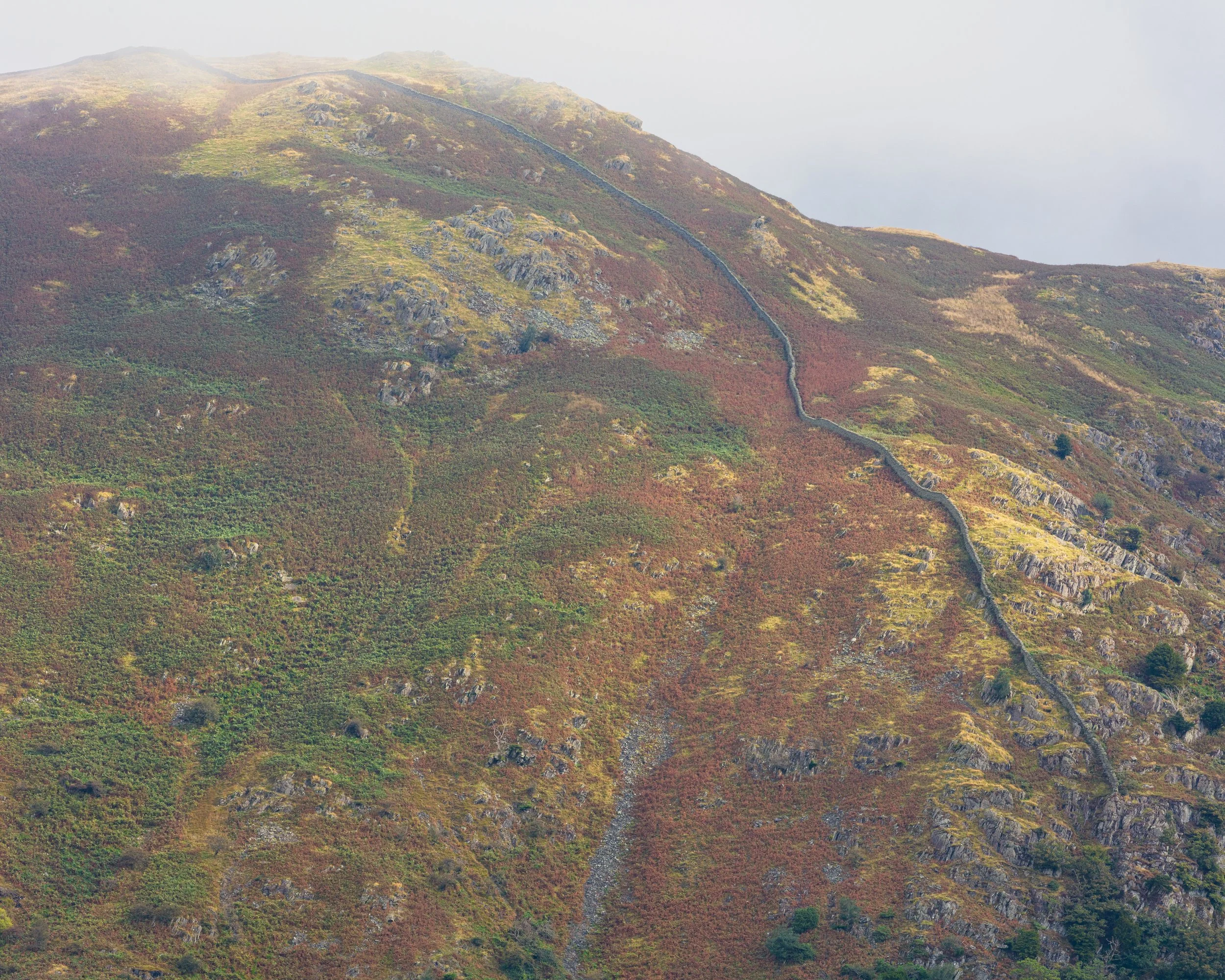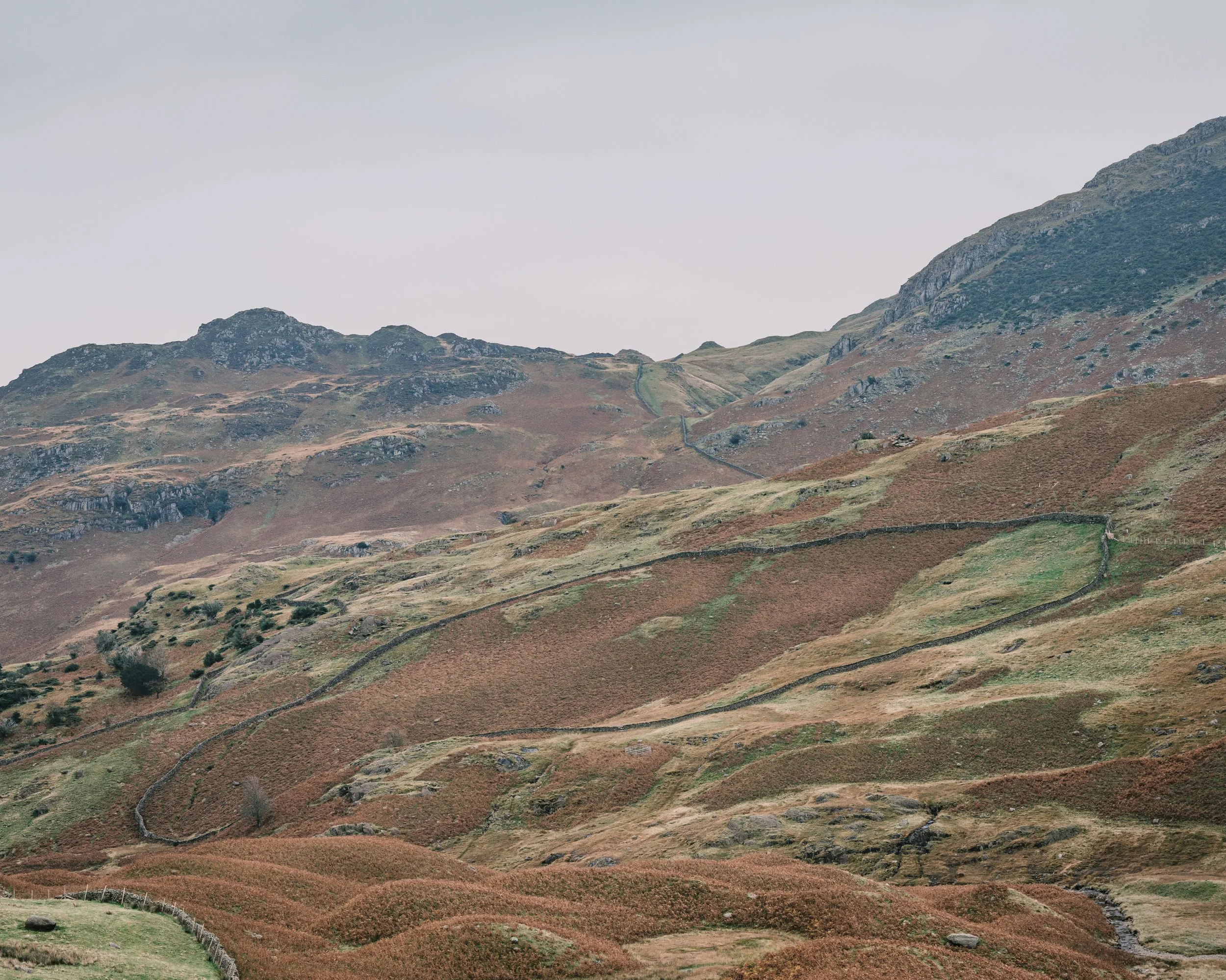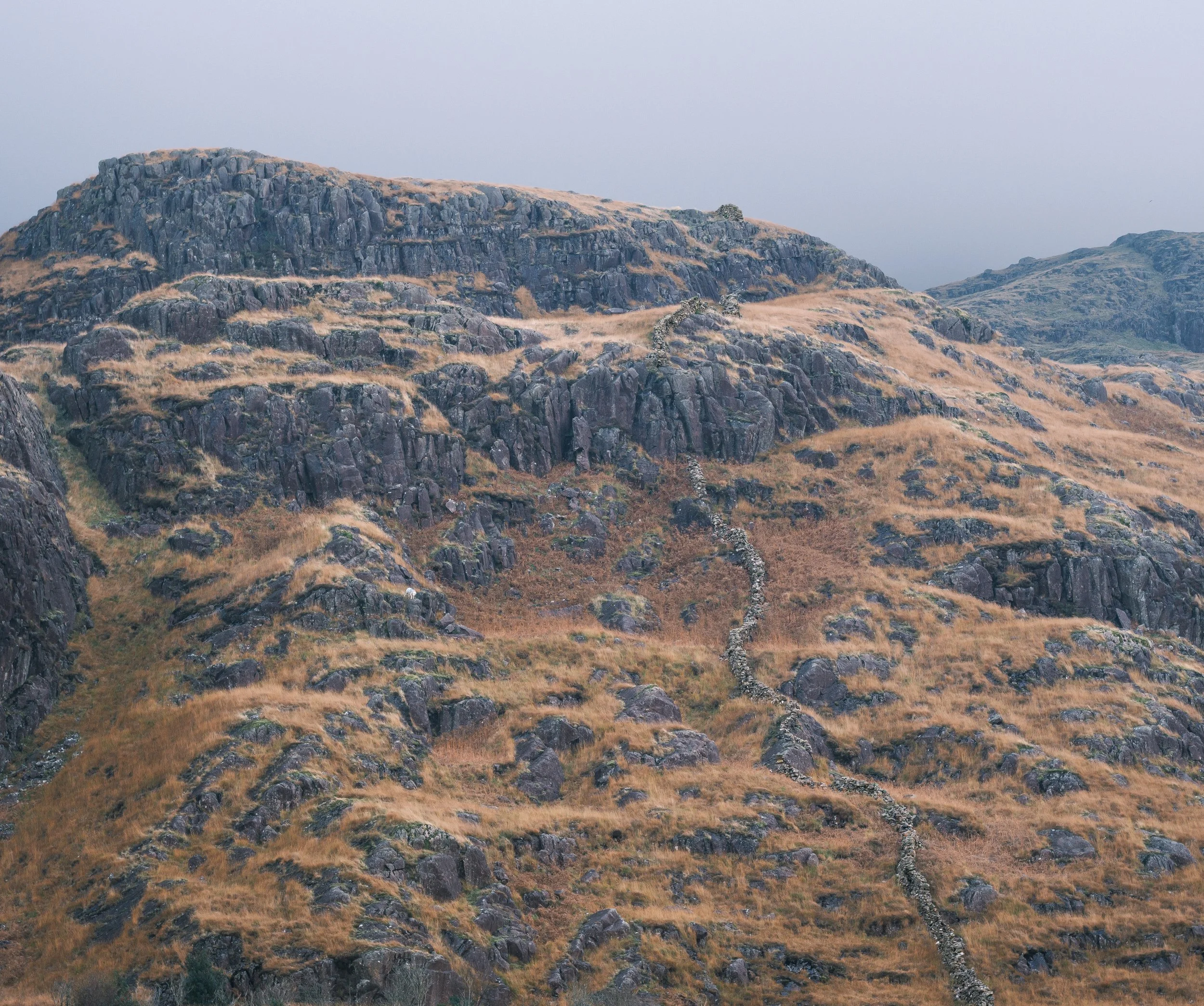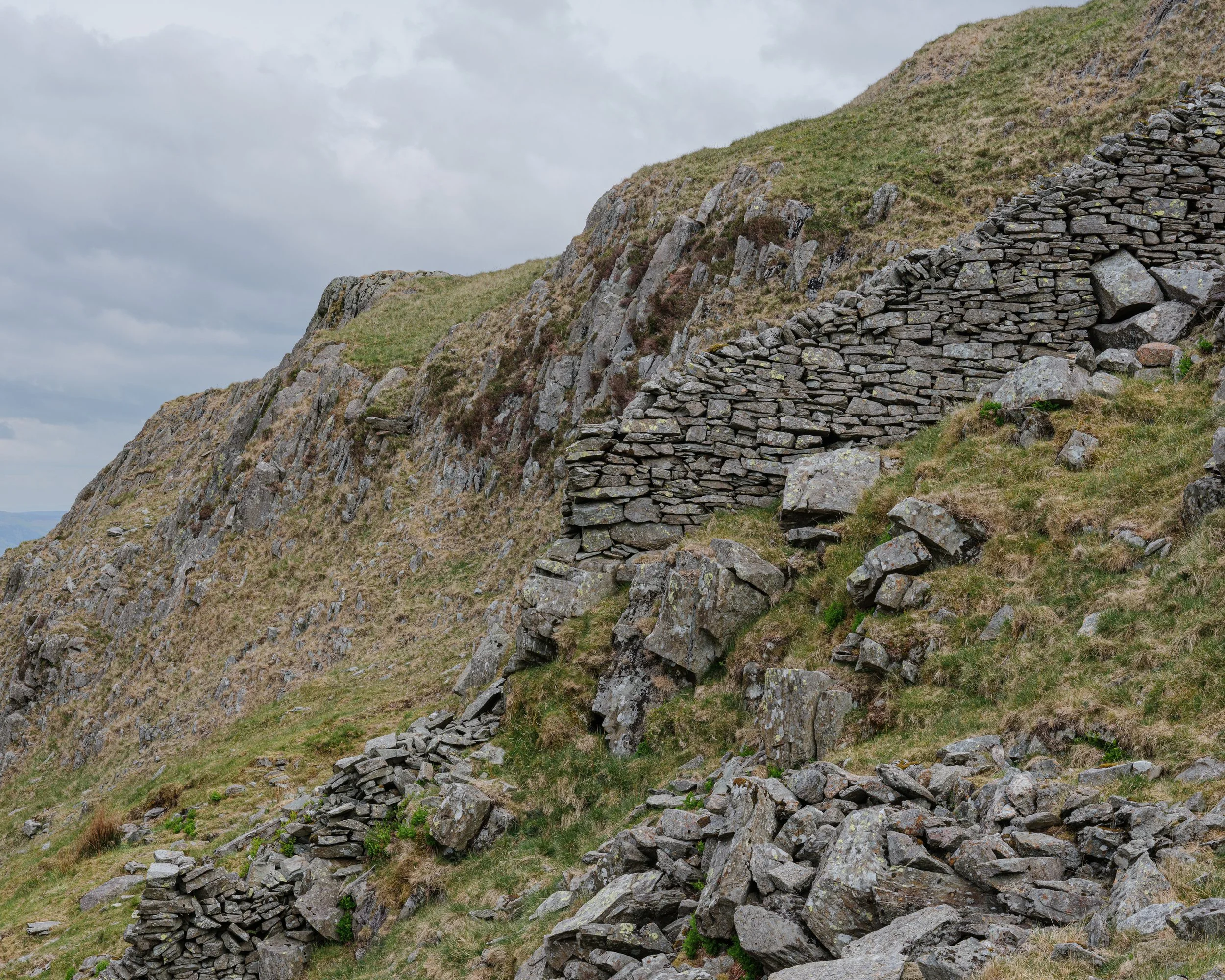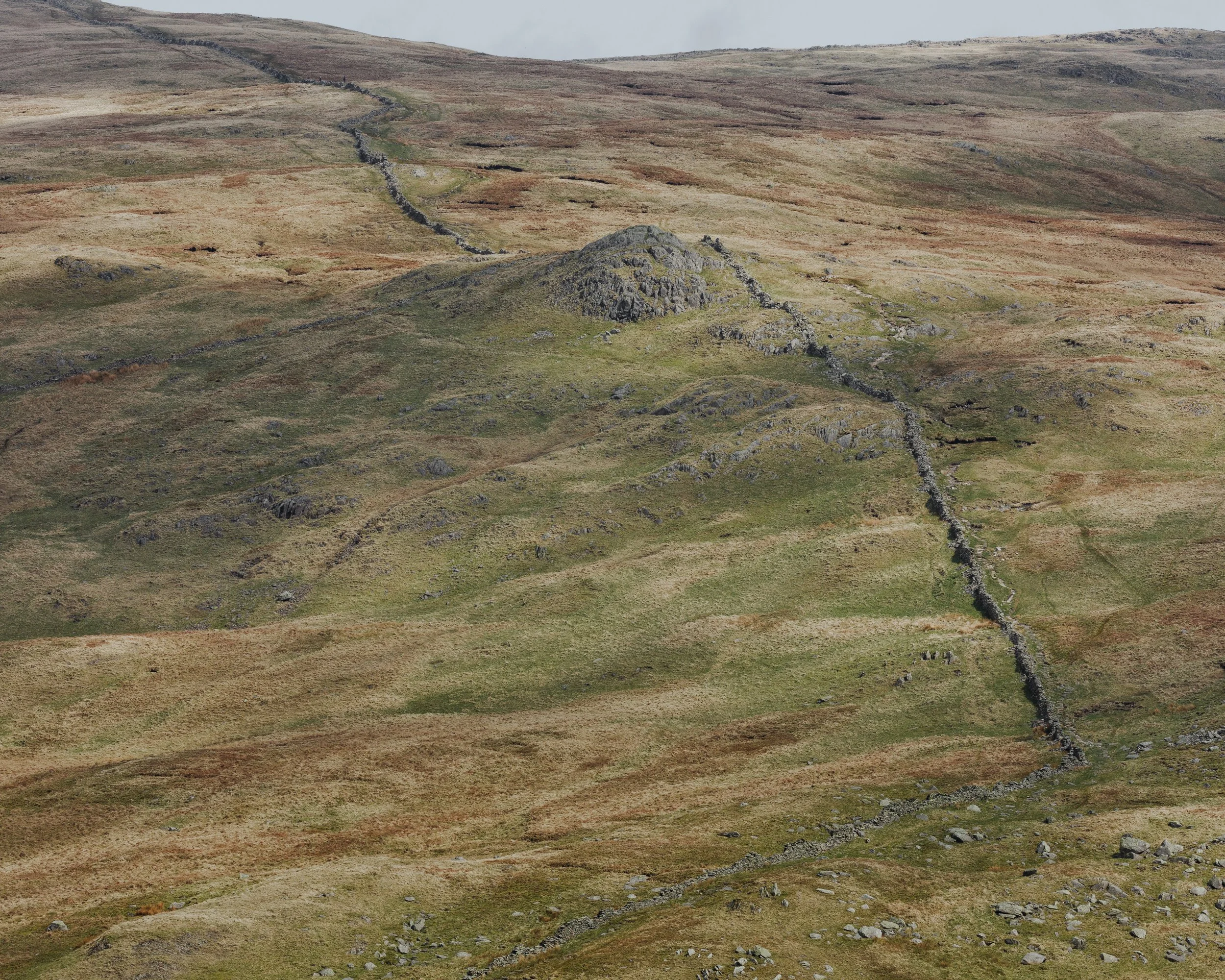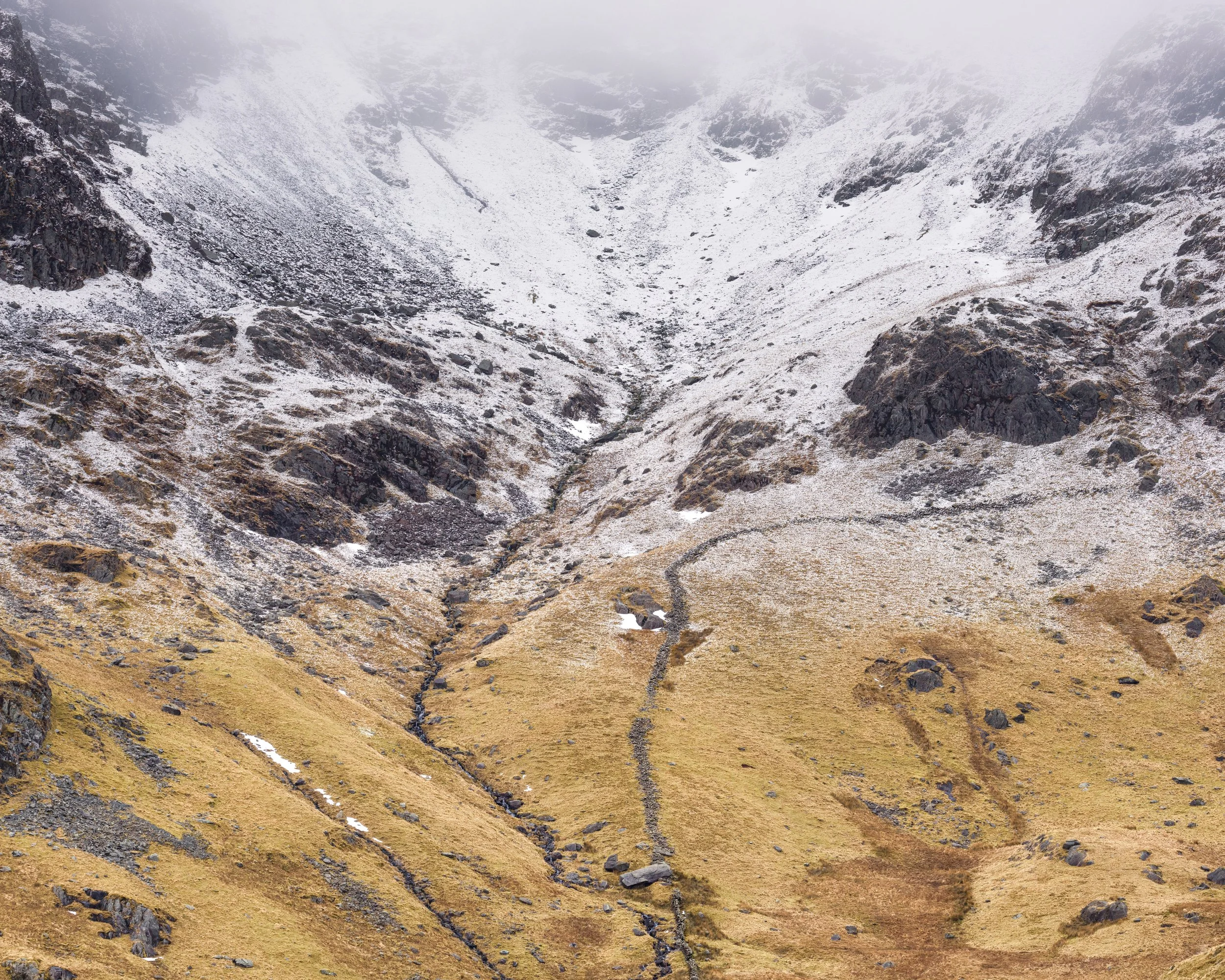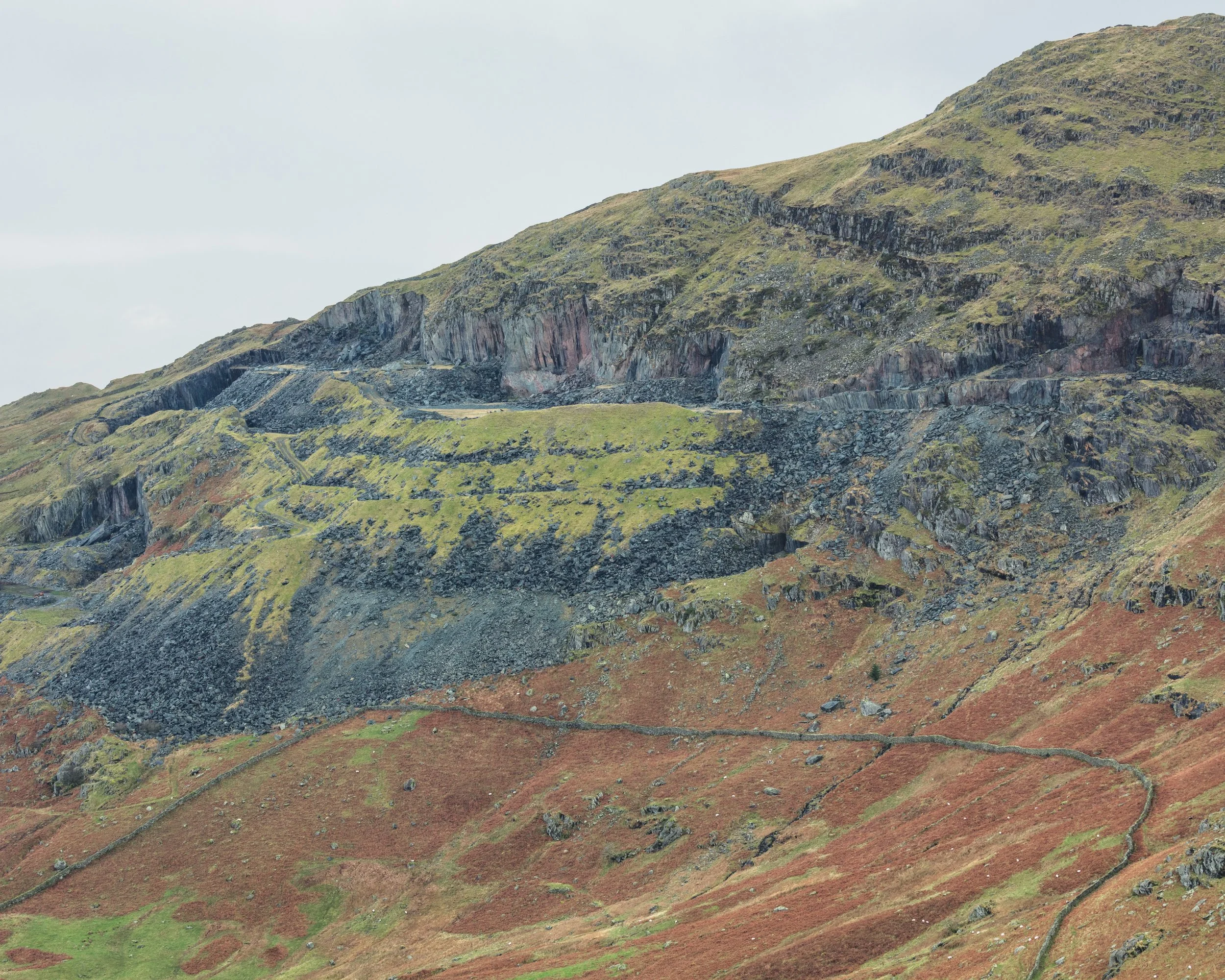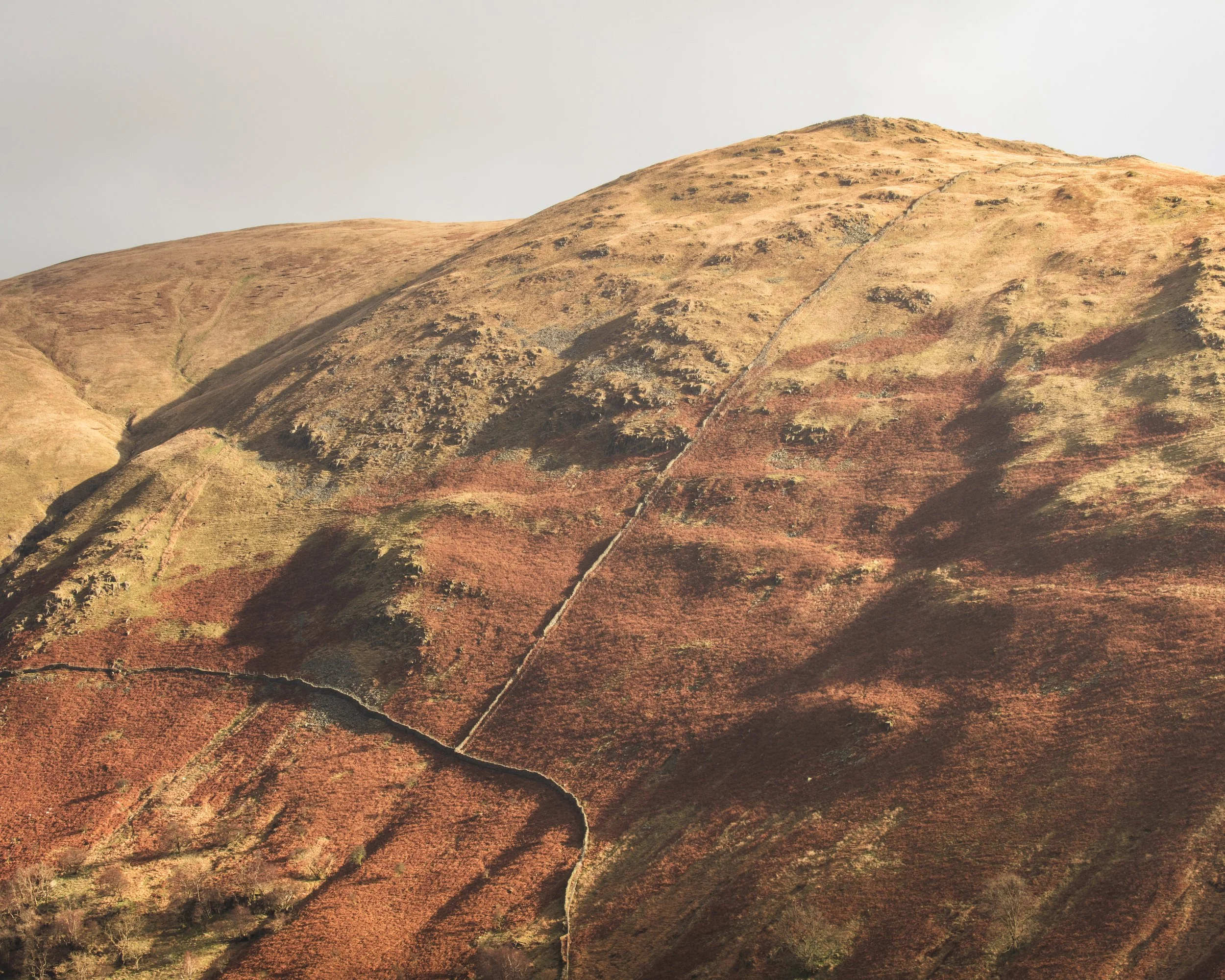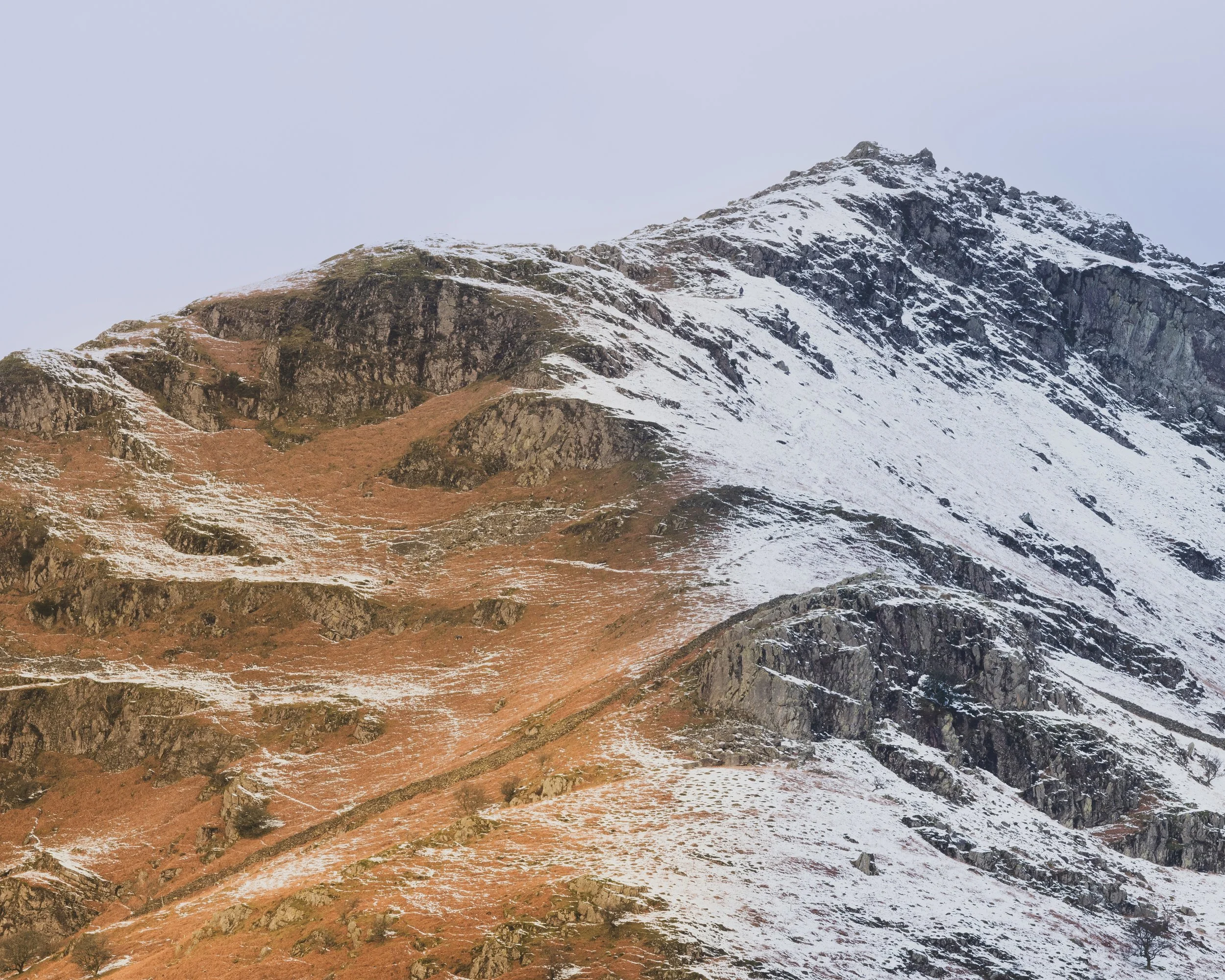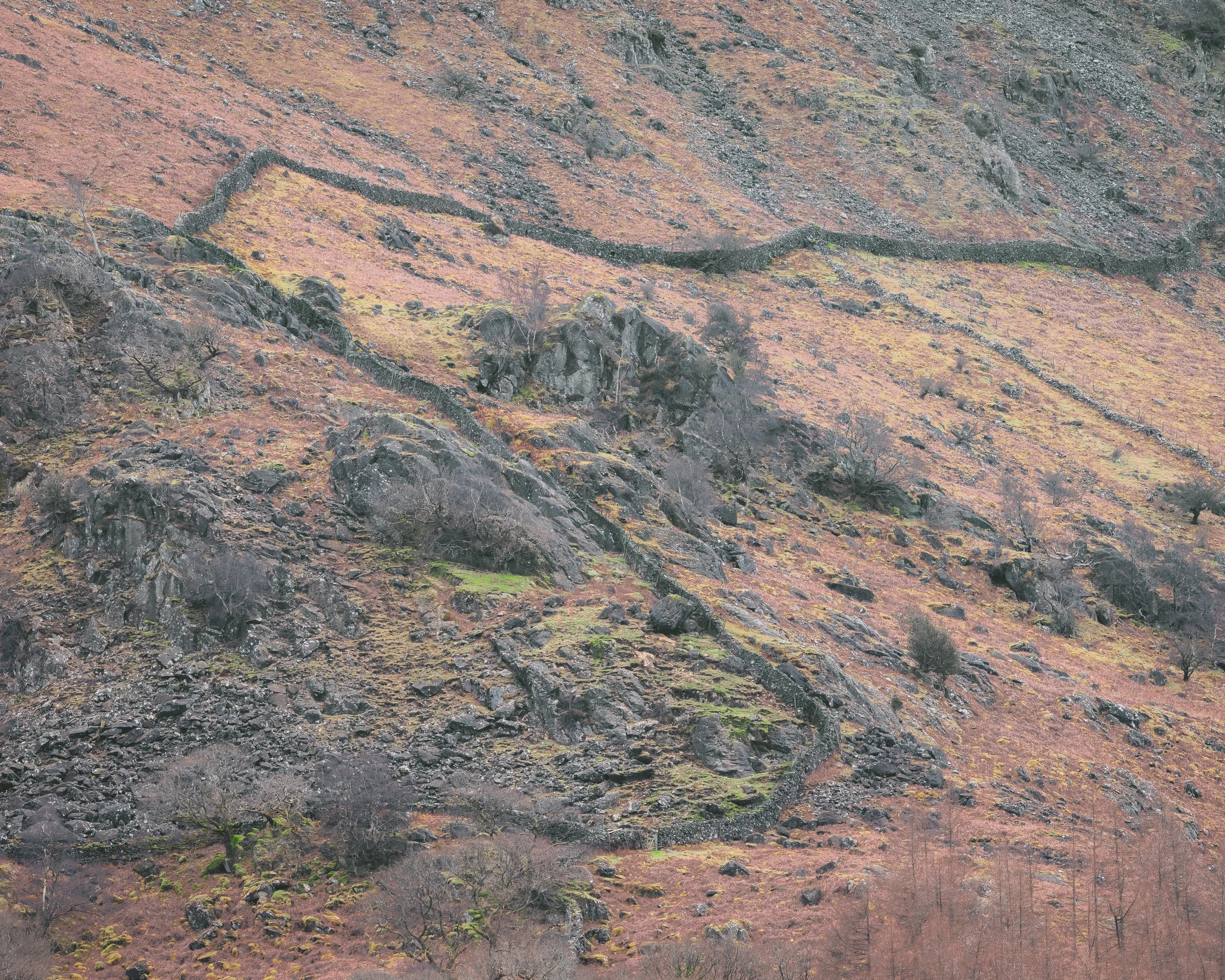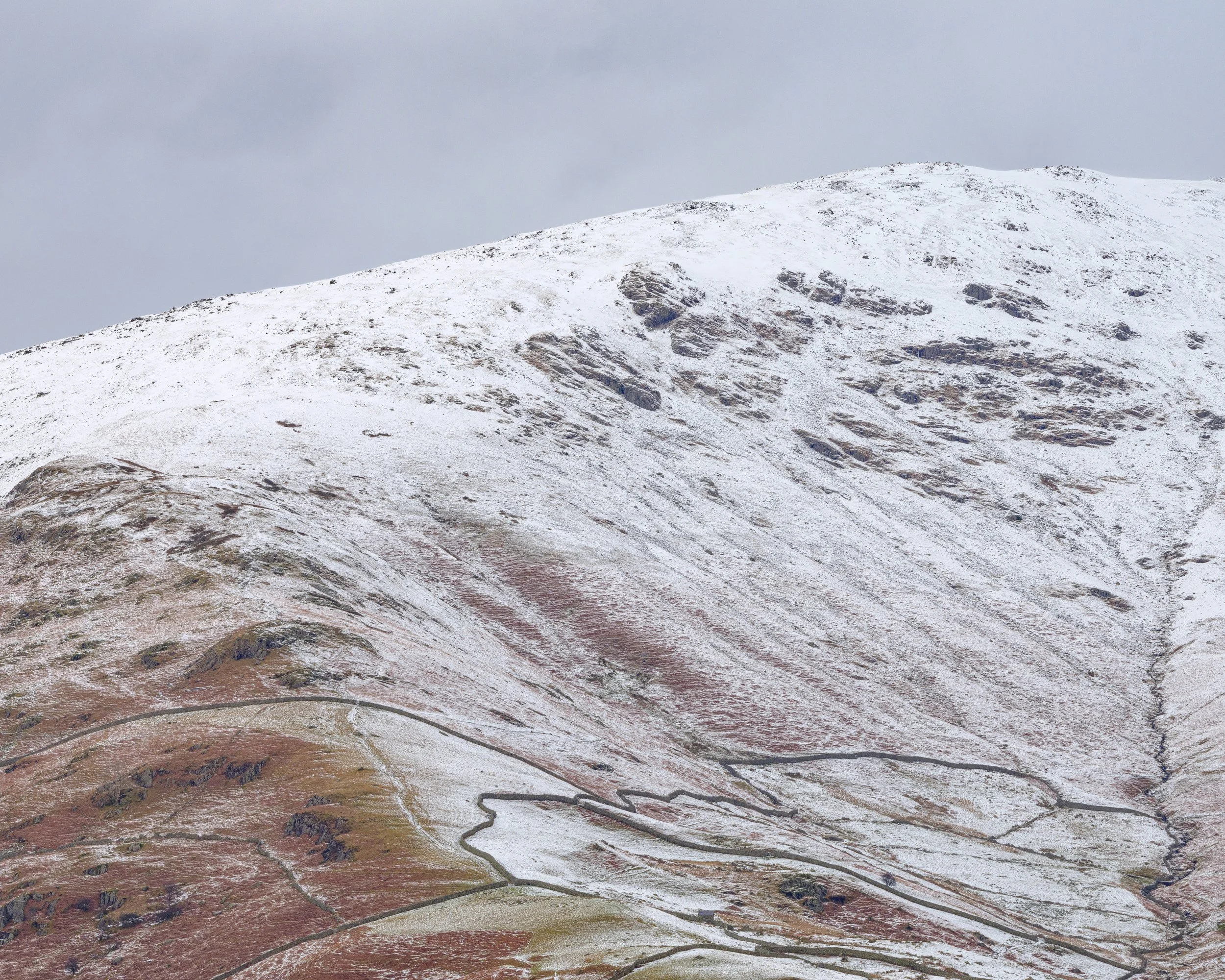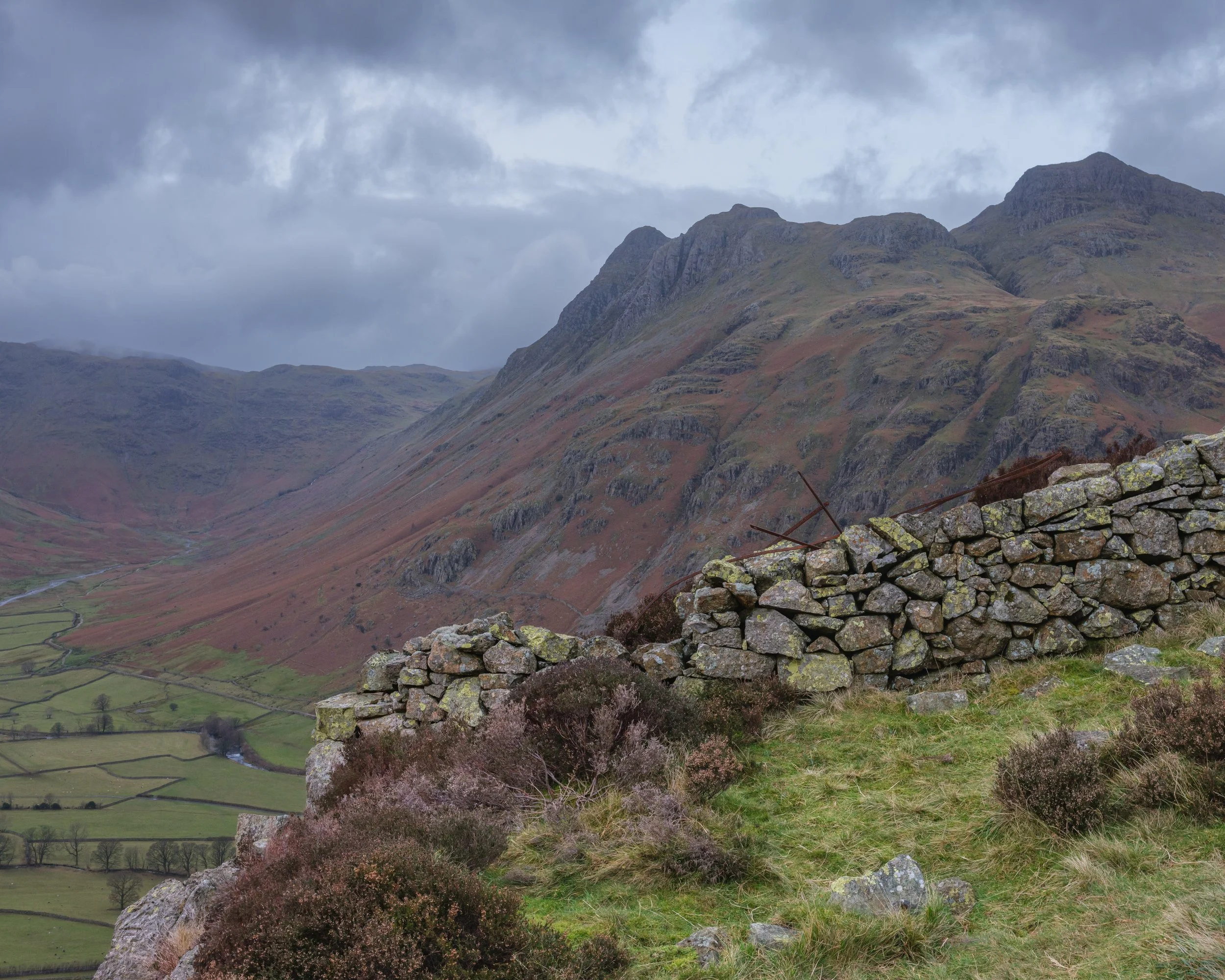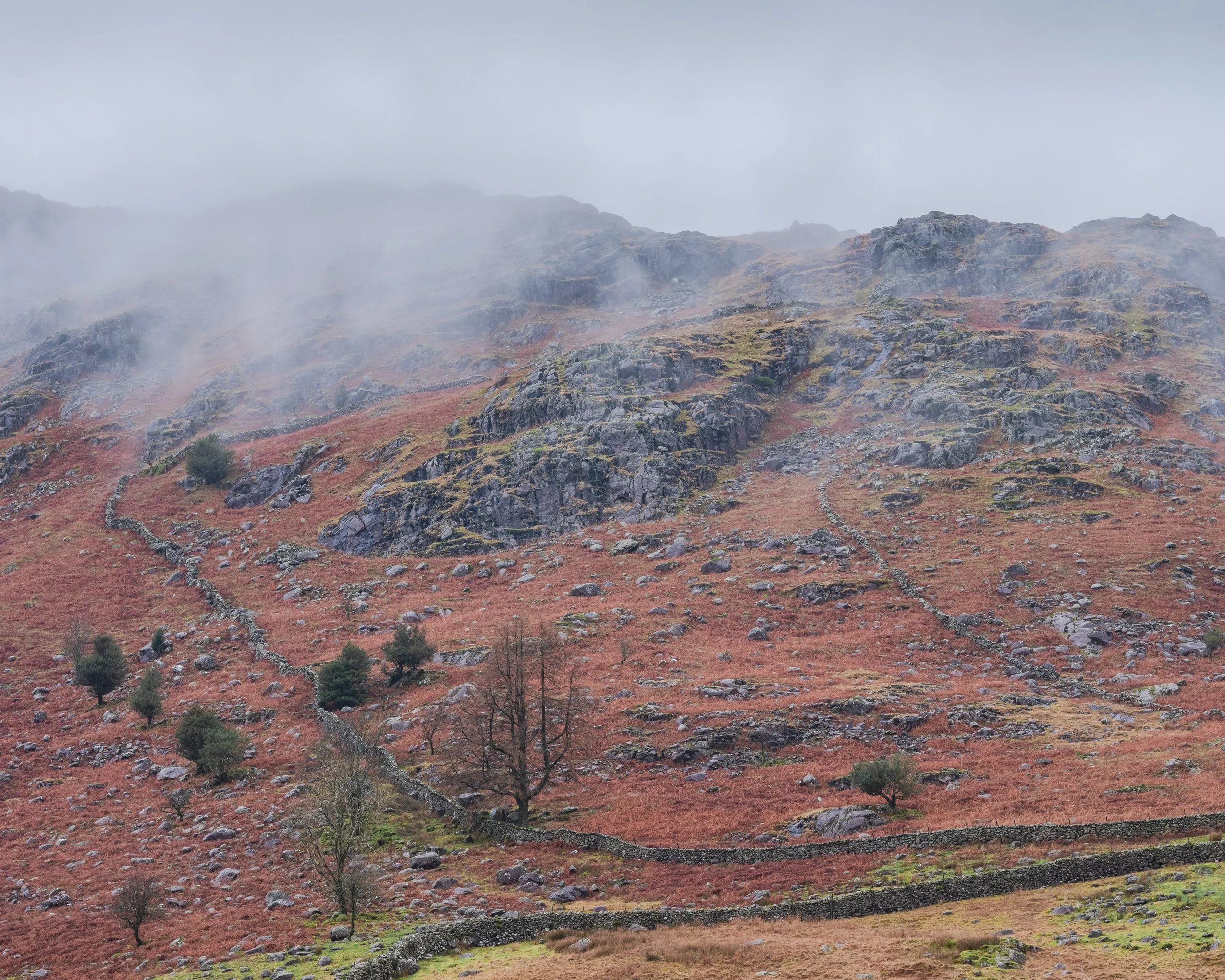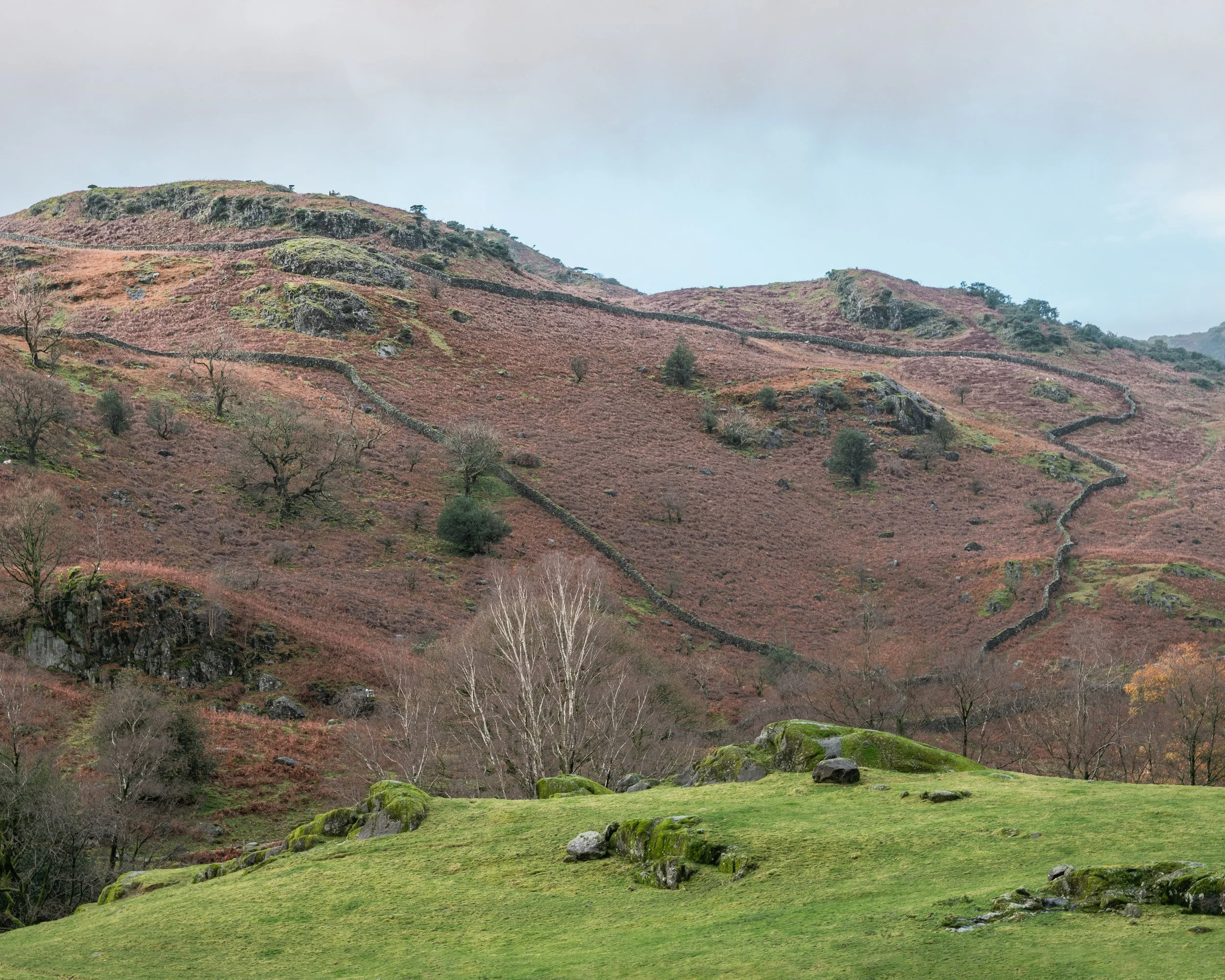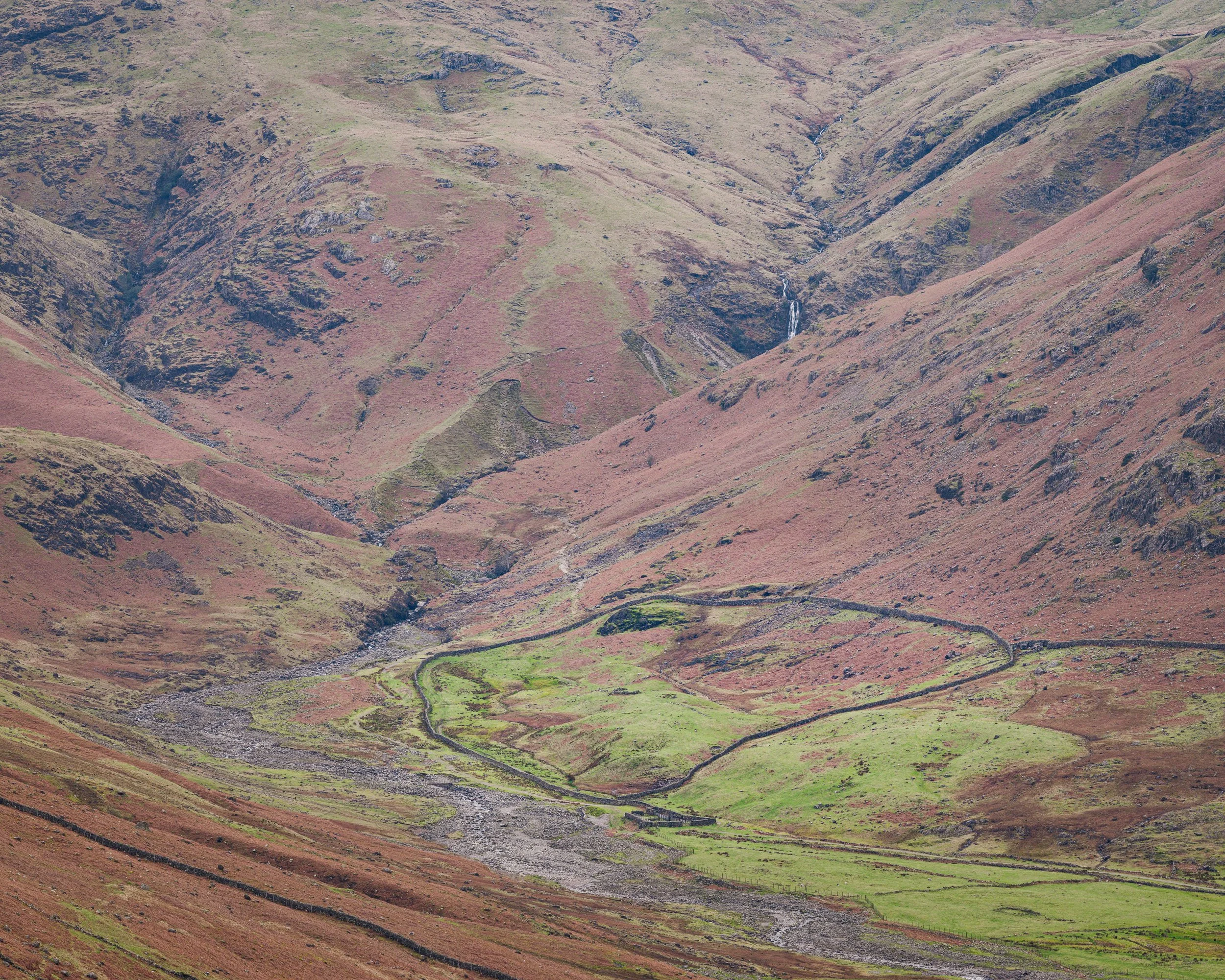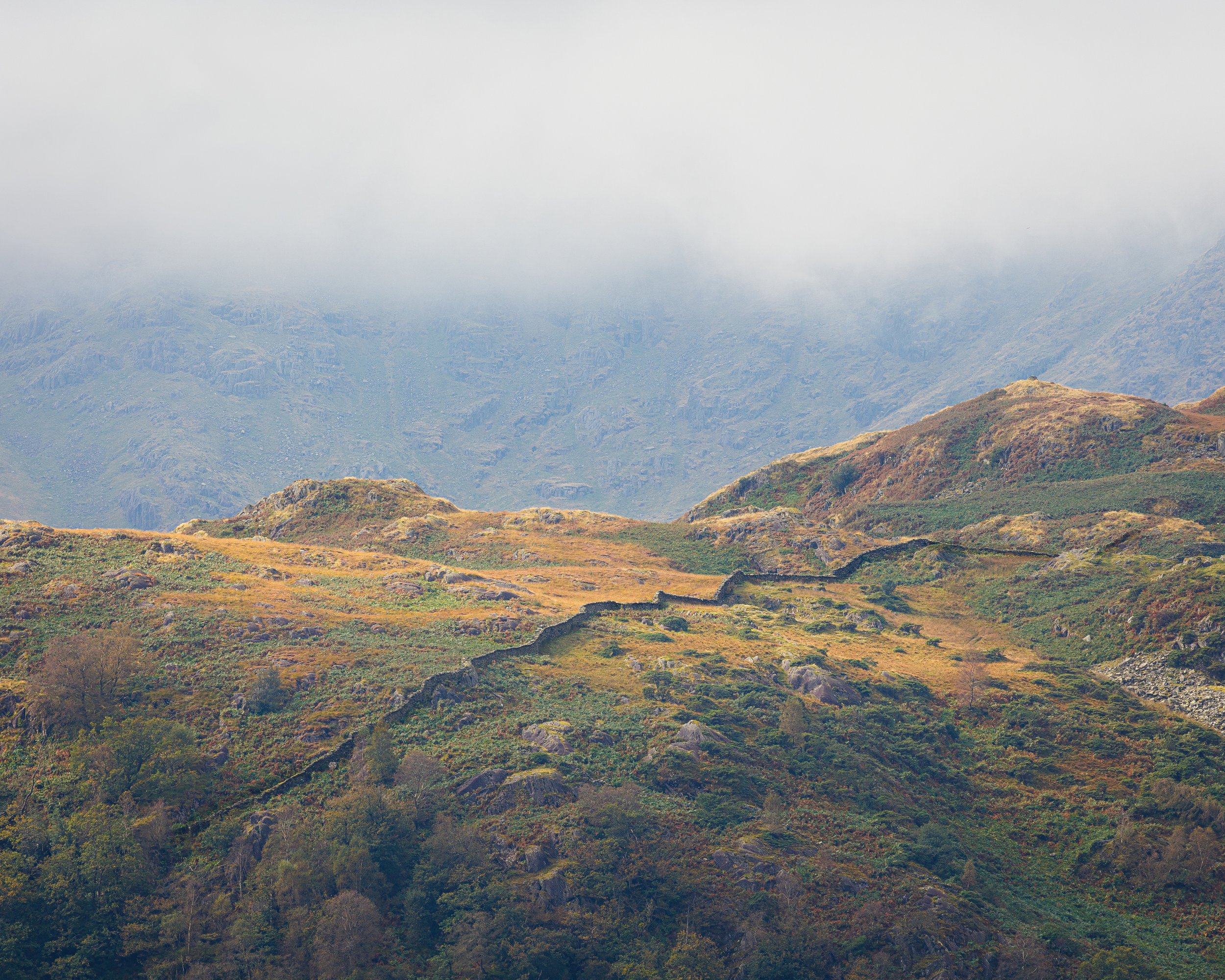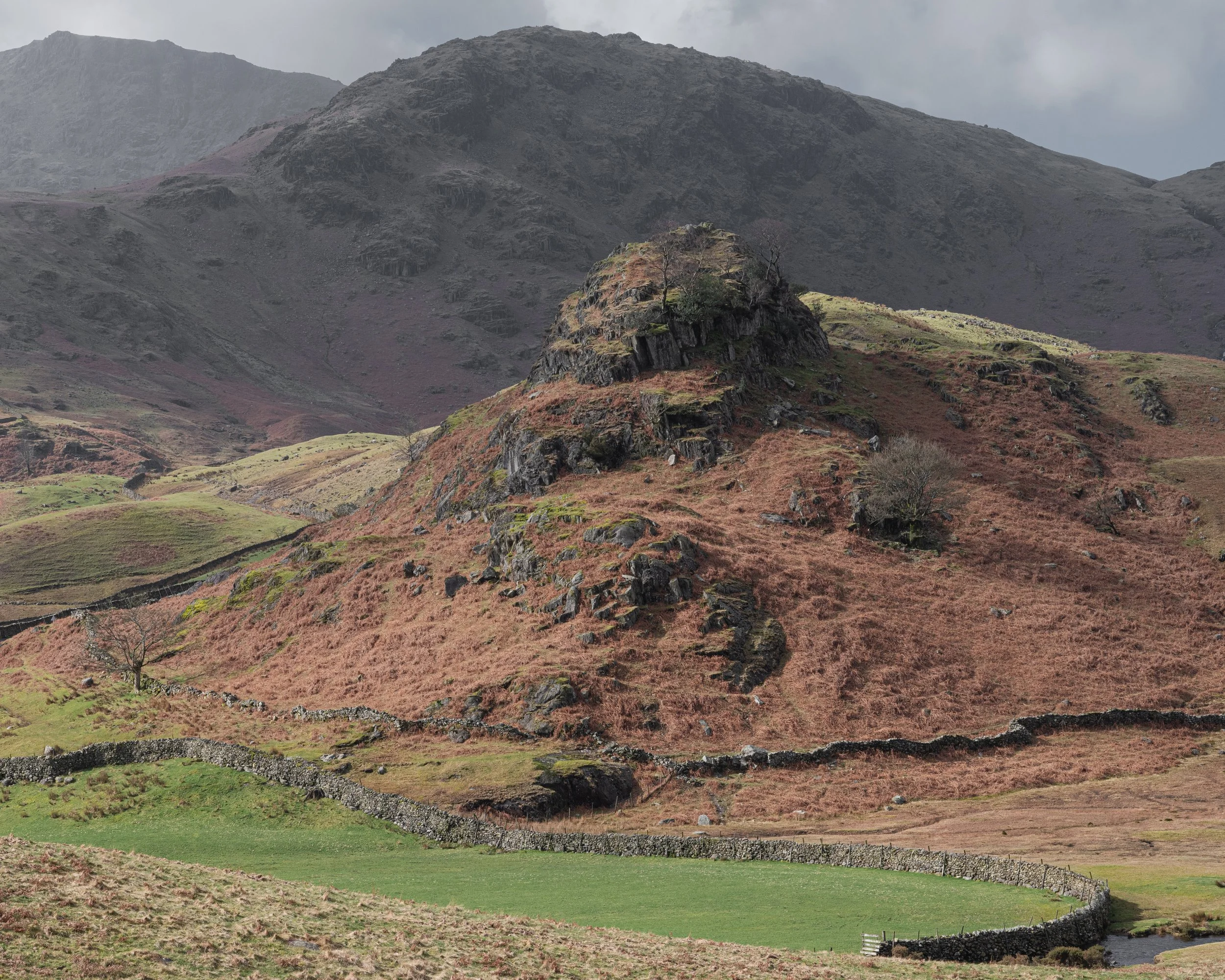
Enclosure
Many impressive walls have been built in Britain over the centuries but the drystone walls that can be found threading their way across the Cumbrian fells are particularly striking. One of the oldest wall types is known as the ‘ring garth’ and was built during the 11th century to keep the grazing animals on the fell side from trampling and eating the crops that were grown in the valley. During the 15th century, farmers needed to use more land from above the ring garth in order to meet the food demands of a growing population, ‘intake walls’ were built higher up the fell side. In the 18th century, controversial acts of parliament commonly known as ‘the enclosures’ were passed. Landowners reacted by hiring large walling gangs to enclose vast areas of the upland commons. The enclosure acts gave landowners who were able to erect a boundary within a certain timeframe the right to extinguish a commoners’ right to graze and therefore claim the land as their own. The wealthier the landowner, the quicker they could build their walls claiming the land as legally enclosed. In some cases two separate gangs would be employed to began building at different locations and would miss, hence the peculiar kinks in otherwise straight walls or why some appear as meandering ribbons on the landscape. The lines the walls take are visually intriguing. Some are straight as an arrow while others weave in a haphazard way to avoid or include geographical features. From a distance the walls appear as manmade etchings on an otherwise wild and untamed landscape and whilst many of them are still utilised by hill farmers today, in my mind, they also serve as a poignant historical marker of how a whole way of life ended for the rural families who relied on the commons for their livelihood.
